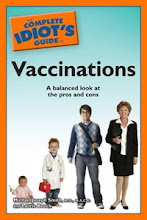"We should become urban farmers," I told my husband, after he dispatched the eggs down the garbage disposal. At least then we would know where our eggs came from, instead of worrying about tainted eggs shipped from an Iowa mega-farm with a history of safety violations showing up in our West Coast home.
The Washington Post ran a fascinating article this week explaining how cost-cutting consolidation and growth in the egg industry have far outpaced regulation, which lead to the egg recall. "Just 192 large egg companies own about 95 percent of laying hens in this country, down from 2,500 in 1987," wrote the Post's Lyndsey Layton, and most of the eggs come from just five states. Although consolidation has accelerated over the past 20 years, regulation has not. Layton wrote that "the Food and Drug Administration, which has responsibility for the safety of whole eggs, had never inspected the two Iowa-based facilities at the heart of the massive recall that began 10 days ago."
Layton explained that different regulatory agencies divvy up who inspects chickens and who inspects eggs, and that some states do their own egg inspections while others (such as Iowa) do not. These circumstances make it easy for egg inspection to fall through the cracks. New legislation that would require yearly FDA inspections of egg producers is working its way through Congress now.
Unfortunately, legislation doesn't always protect public health. Take agricultural subsidies, for example. In a recent New York Times article about obesity in America, writer Natasha Singer explains that making healthier food cheaper could help Americans eat healthier and lose weight. Government subsidies for the products used in fast foods, though, make them more affordable for consumers than fresh fruits, vegetables, and healthier choices. Singer explains:
The inflation-adjusted price of a McDonald's quarter-pounder with cheese... fell 5.44 percent from 1990 to 2007, according to an article on the economics of child obesity published in the journal Health Affairs. But the inflation-adjusted price of fruit and vegetables, which are not subject to federal largess, rose 17 percent just from 1997 to 2003, the study said. Cutting agricultural subsidies would have a big impact on people's eating habits....Government policies should support the health and safety needs of the majority of Americans, and we're clearly not there yet, as food recalls increase and healthy food gets more expensive.
Not that everyone has to start a backyard farm; I can't even talk the family into getting a beehive. But I think that we do need to question how our food is produced and where exactly our food comes from and, if necessary, pay more to support food that is healthier and safer until changes in regulations and subsidy policies make that a reality.



